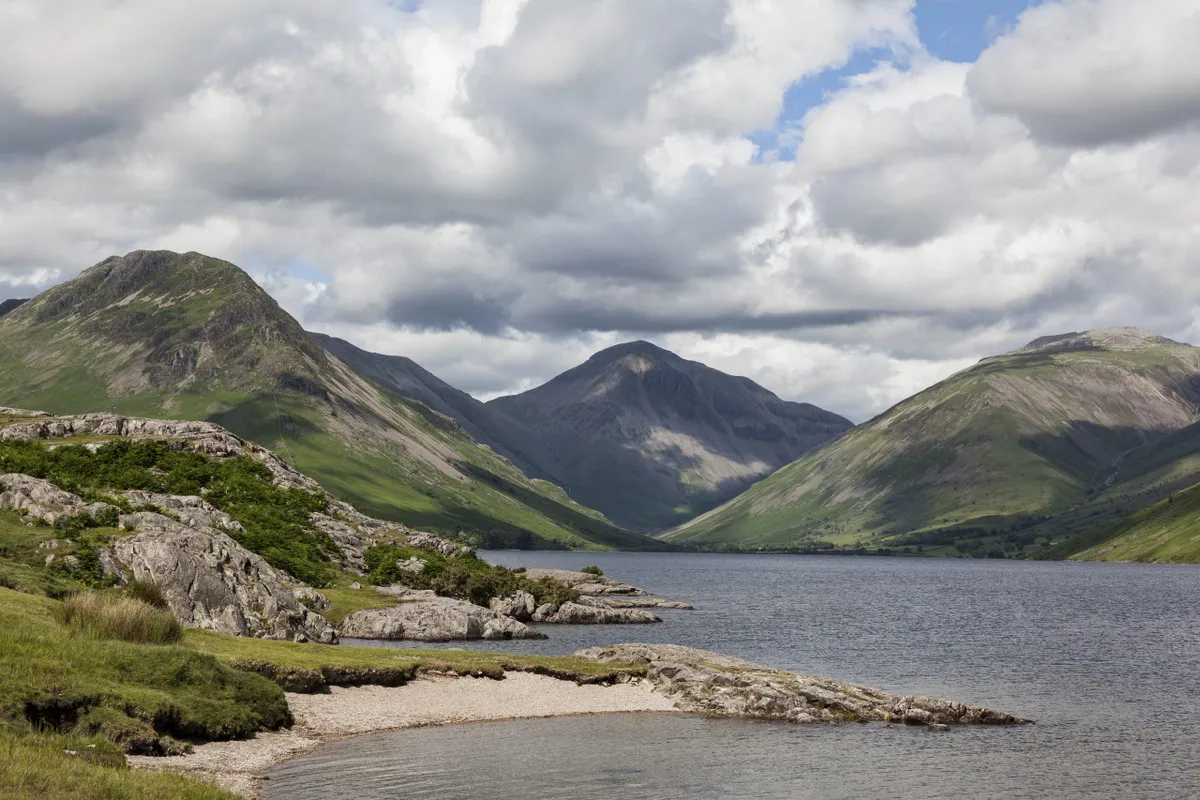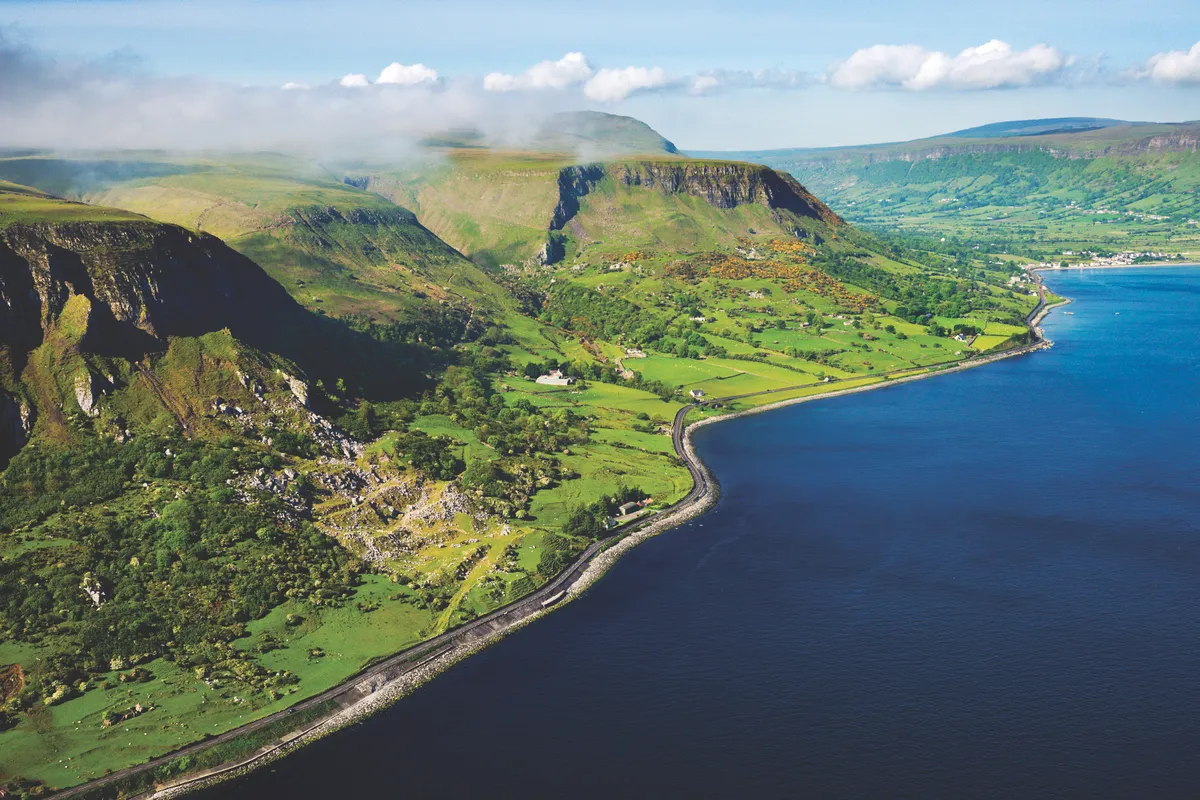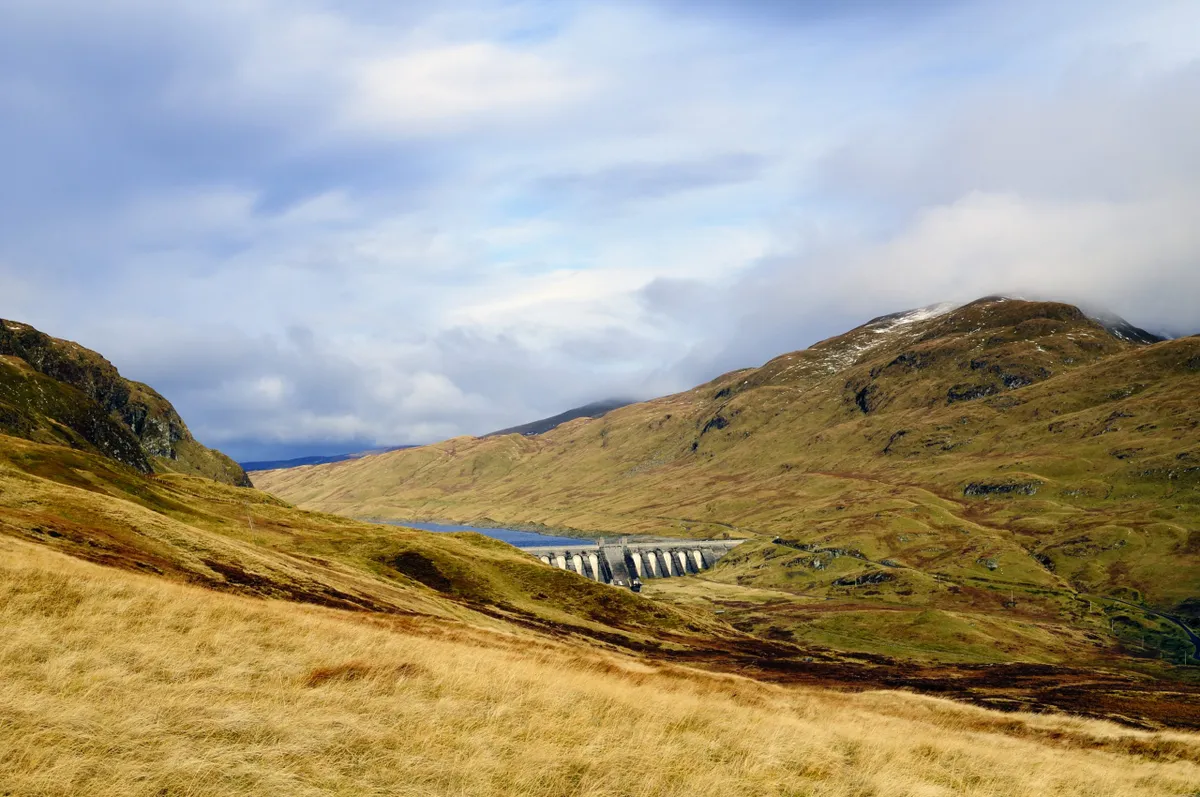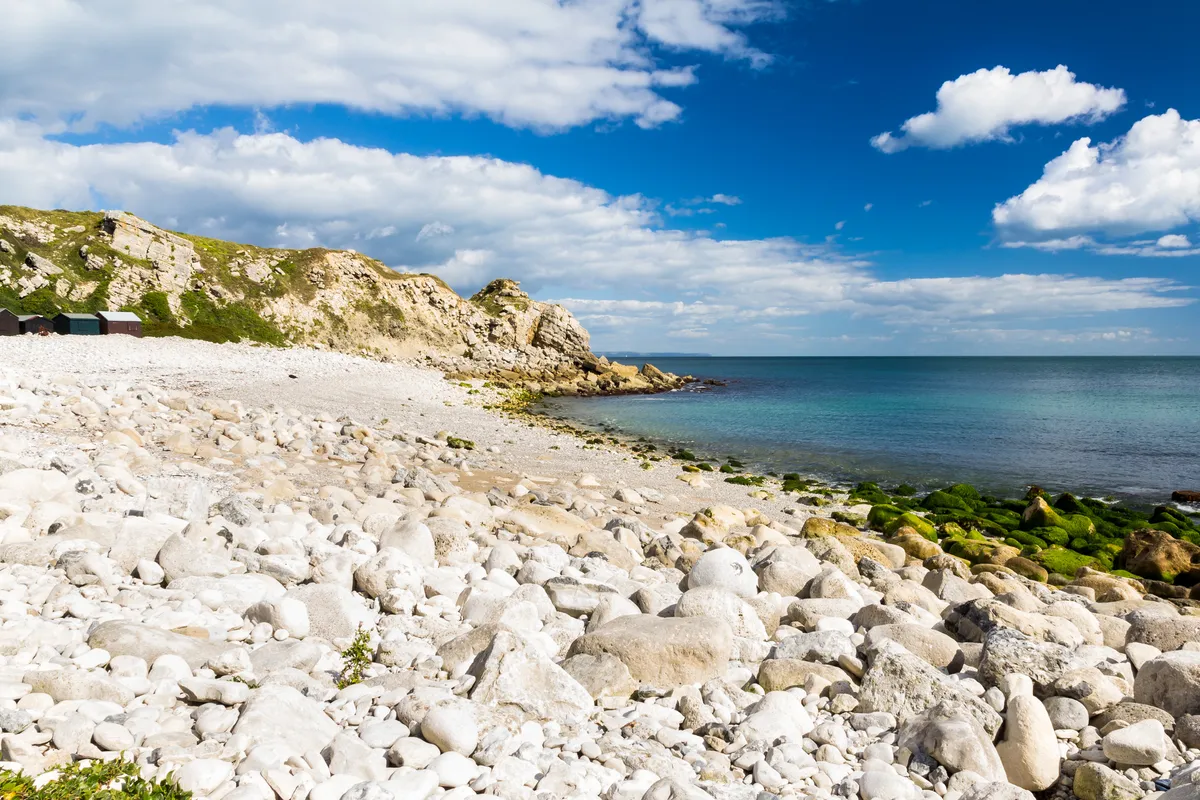Every year, thousands of tourists pour into the countryside to sample its delights. The trouble is that they always head for the same spots. Is it any wonder that the nation’s honeypots are swarming in the summer months?
So what if you want to get far from the madding crowds in 2020? Well, help is now at hand with the
ultimate guide to crowd-free retreats.
Lakes
Hotspot Windermere, Cumbria | Why not try? Wast Water, Cumbria

Far from the madding crowds and their motorboats, lonely Wast Water is the Loch Ness of the Lake District; the darkest and deepest lake, and the most mysterious. Way down in the south-west of the region, this is the jewel of the Cumbrian lakes – a moody slice of jet, rather than a sparkling diamond. It is the most confined of the large lakes, overhung on the south by the tremendous stony curtain of the Screes, a rocky downfall from the high ridge of Whin Rigg and Illgill Head that plunges dramatically 520m (1,700ft) into the lake.
The Screes form a rugged and impressive backdrop to the long, narrow mere. The lake is less than ½ mile wide at its widest, but it descends to a maximum depth of 74m (243ft). It seems incredible that you could sink Queen Mary II in that narrow cleft so that not even her topmast would show above the surface.
Climbing the Screes would tax an expert mountaineer. You can walk the tricky path that runs below, but these great stone sheets are best seen across the lake from Buckbarrow or from Middle Fell (Wainwright’s
suggests how to walk there), with the whole dark length of Wast Water laid out at your feet. (OS Explorer OL6, Landranger 89).
Geological
The Giant’s Causeway, Antrim |
Antrim Coast Road, Antrim

The Giant’s Causeway, a marvel of some 37,000 hexagonal basalt columns, is the honeypot of Northern Ireland’s fledgling tourist trade. For something less obvious, head along the A2 Antrim Coast Road from Larne. This stunning drive skirts the most breathtaking piece of coastal scenery in Ireland. The Antrim cliffs are especially striking for their succession of cliffs, bluffs, headlands and glen mouths, and for their marvellous array of colours.
Driving north, you encounter the first serious cliffs of white limestone around Carnlough Bay. North of here the rock changes to dark red sandstone as the cliffs rise dramatically to some 244m (800ft). Then the basalt takes over around Red Bay, where three of the Glens of Antrim (Glenariff, Glenballyeamon and Glenaan) meet the sea around the flat-topped promontory of Lurigethan. This huge cliff rears 351m (1,153ft) above a green apron of coast. Basalt is the rockstar hereabouts, the overspill from a vast volcanic explosion 60 million years ago, forming a series of dramatic headlands and purple cliffs.
Further north comes paler puddingstone in the cliffs around Cushendun. Detour along the very enjoyable – if slow, steep and bumpy – coast road to Torr Head, where the purple-grey basalt resumes its march of nose-like cliffs and columns towards the Giant’s Causeway. (OSNI Sheet 9)
Heritage
Stonehenge, Wiltshire |
The Harroway

Turn your back on the Stonehenge crowds, cross the A303 and set off on the old green track that crosses Normanton Down. Here is the oldest road in Britain, the Stone Age trackway dubbed Harroway or Hoary Way by Anglo-Saxon travellers when it was already 5,000 years old. Follow it over the Wylye Valley, across the Wiltshire Downs and through the valleys of Somerset and Dorset for 100 miles, in every guise from traffic-snarled dual carriageway to forgotten green lane.
The Harroway’s westward course traverses Ordnance Survey maps for 150 miles, from Farnham, Surrey, where it meets the North Downs Way National Trail, to the port of Seaton in Devon where prehistoric tin traders collected the precious metal from Cornish cargo ships.
Follow the A303 for a mile or two around Chicklade on the Wiltshire/Dorset border, then continue along a track to White Sheet Hill, where it joins a country road. Now it’s a rutted farm track; in Georgian days it was a great coach road, while 5,000 years ago it was a trading route. The Harroway has been in use for millennia, and we still use it today. (OS Explorers 145, 144, 131, 130, 143, 142, 129, 117, 116; Landrangers 183-86, 192-94).
Woodland
Hotspot Westonbirt Arboretum, Gloucestershire | Why not try? Forest of Dean, Gloucestershire

There’s a beauty in the order and artifice of Westonbirt Arboretum that draws the crowds all year round. And there’s another kind of beauty to be found, season by season, in the ancient and uncrowded Forest of Dean, just across the old Severn Bridge on the fringes of Wales.
The Forest of Dean covers some 35 square miles, with the River Wye forming its western flank and the broad estuary of the Severn its southern border. What you make of the forest depends on the season of your visit, and who you meet there. In spring, the forest is a place of translucent green, full of light and birdsong; in summer it seems to breathe heavily as its streams and pools dry to stodgy black mud and the birds fall quiet; in autumn every clearing and forest road flickers with the constant diagonal fall of scarlet and gold leaves. In a cold winter, the forest gains mystery, its frozen ponds creaking, its innermost corners sealed up in absolute silence.
Russell’s Inclosure in the heart of the forest is a good place to get a feeling for the essence of the area. Here are 300-year-old oaks, conifers and wetland trees such as willow and alder are dotted around the stream bogs and old ironworks ponds. Frogs, butterflies, dragonflies, birds and insects thrive, as do fallow deer. Best of all, you can walk 10 minutes into the inclosure and find yourself, literally, lost in the forest. (OS Explorer OL14, Landranger 162)
Market town
Hotspot Stow on the Wold, Gloucestershire | Why not try? Stroud, Gloucestershire

Stow is an undeniably handsome town, sitting high in the northern Cotswolds. It’s a wonderful place to visit, but you have to fight for space on the pavements, so head south. Anyone who knew Stroud 30 years ago would be amazed to see it recommended as a great alternative place for visitors to go. This modest little town, tucked down into its south Cotswold cleft where the River Frome meets the Slad and Ruscombe Brooks, was a byword for neglect.
It had prospered during the Industrial Revolution, thanks to the gushing waters that drove spinning mills. But those days were gone, and the town was down on its luck, rich in nothing but derelict mills and its literary connection in Laurie Lee’s
.
Nowadays, however, Stroud has a proper spring in its step once more. It has smartened up without losing its character, gaining good pavement cafés and a lively farmers’ market every Saturday. Best of all, the old textile mills have at last been recognised for what they are – magnificent palaces of commerce, beautifully built of the silvery local stone, many of them ornate with balustrades and pediments. (OS Explorer 168, Landranger 162).
Country house
Chatsworth, Derbyshire |
Hardwick Hall, Derbyshire

Derbyshire’s premier country house attraction, Chatsworth, was built around the turn of the 18th century by William Cavendish, 1st Duke of Devonshire. Chatsworth is fabulous, and also fabulously popular. If you don’t fancy facing the crowds, head a few miles east across the M1 to find Hardwick Hall. It was the 1st Duke’s great-grandmother, Elizabeth Hardwick, a flame-haired farmer’s daughter who rose through four moneyed marriages, who built Hardwick Hall.
Bess of Hardwick was an icon of Elizabethan times, the Golden Age of England. Her hallmarks were arrogance, extravagance, a rampant self-confidence and a talent for spending. She began a splendid new house, then abandoned it in favour of the far more impressive Hardwick Hall, a fairytale of lacy stonework and huge windows.
Hardwick Hall reeks of money and of ego; neither were in short supply with Bess. You’ll find her initials, ES, carved and embroidered everywhere. Here are the tapestries and rich hangings she worked on, the inlaid tables and beds she ordered. This Tudor masterpiece of a house was Bess of Hardwick’s way of showing everyone how high she’d managed to climb. Glass was fabulously expensive in Elizabethan times – not that Bess cared – and the house had so many windows that they were celebrated in a rhyme: Hardwick Hall, more glass than wall. (OS Explorer 269, Landranger 120).
Mountain
Ben Nevis, Highland |
Ben Lawers, Highland

Everyone knows Ben Nevis and everyone wants to climb it. Quite rightly, too: as Britain’s highest mountain at the 1,344m (4,409ft) tall, it looms large in the national psyche. But if you want to avoid the large volume of litter, about 70 miles by road to the south-west (a mere bagatelle in Highlands motoring terms, don’t forget), lies the majestic yet little-frequented Ben Lawers. At 1,214m (3,984 ft), Ben Lawers is a proper lump of a hill. But that is not its chief attraction: Ben Lawers is all upside-down.
Subterranean upheavals 400 million years ago tipped the mountain on its head, so that the older rocks are at the top. These calcareous schists are the ones on which arctic-alpine plants thrive best. As you climb higher up the mountain, you find more and more of these delicate, colourful flowers that have clung on here in the high grassland since they arrived in the post-Ice Age era. Look for mountain pansy and cerulean alpine gentian, rock speedwell with its tiny scarlet eye in a blue face and springy cushions of yellow cyphel.
The National Trust for Scotland has established a big exclosure – a fenced-off area of the mountainside just above the visitor centre. The nature trail around here runs through beds and banks of exuberant flowering plants – clusters of tiny eyebright, mats of pungent wild thyme, lemon-scented fern that you can pinch to release its sharp citrus smell. Also look out for yellow saxifrage in large clumps among the rocks of the stream. (OS Explorer 378, Landranger 51).
Coastal
Durdle Door, Dorset |
Isle of Portland, Dorset

You can see the Isle of Portland from Durdle Door, lying out in the English Channel like a crouching white lion on a blue stretch of savannah. Unsung treasure of the much-hyped Jurassic Coast of Dorset and Devon, this strange peninsula is the place the tourist industry forgot, a quarried mass of freestone that carries an air of defiance, even of menace, as it pushes its bald flank and forehead into wind and waves. You can well see why Thomas Hardy styled it the Gibraltar of Wessex.
The best way to appreciate Portland’s stark appeal is to walk the maze of footpaths. Portland has been quarried since at least Roman times, and as you walk you will see great downfalls of broken rock everywhere – the spoil rock that was shovelled over the cliffs to litter the beaches and ledges below. The cliffs are no longer quarried and nature has moved in to clothe the abandoned stone blocks with deep pink drifts of valerian, blankets of yellow ragwort and strong-scented mugwort.On the plateau that forms the crest of the island, looms the huge, ship-like building of Portland Jail (now a young offenders’ institution), with its great chimneys and grim rows of tiny windows. Its intransigent bulk in the harsh landscape of bare stone and scattered scrub seems as alien to Dorset’s cosy cream-tea image as one can possibly imagine. (OS Explorer OL15, Landranger 194).
Words: Christopher Somerville
